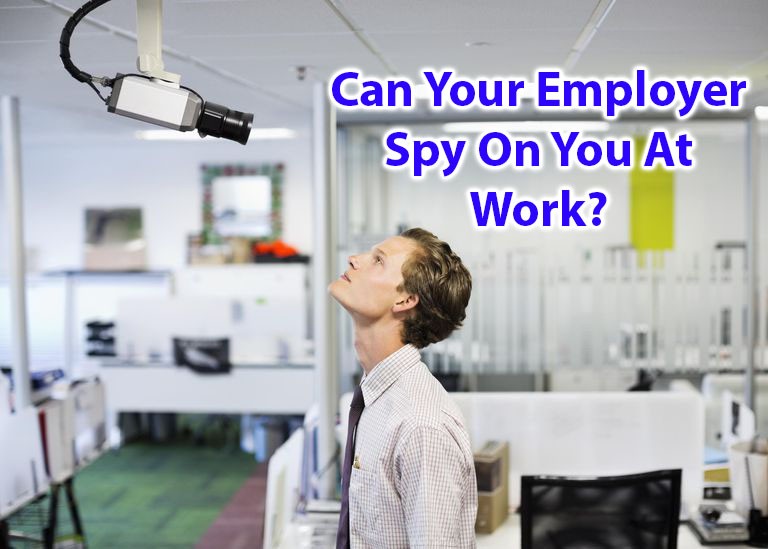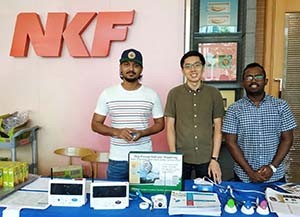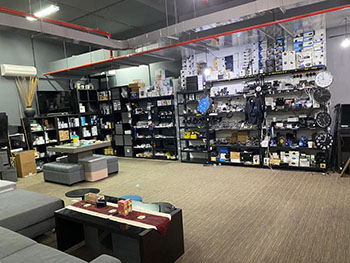Top Panic Button, Body Worn Camera, GPS Tracker & Bed Exit Pad Alarm, Spy Camera Supplier
Author Archives: admin
- 17
Oct 19
0
- 17
Oct 19
0
Implementing Man Down System / Lone Worker Safety (A10002)
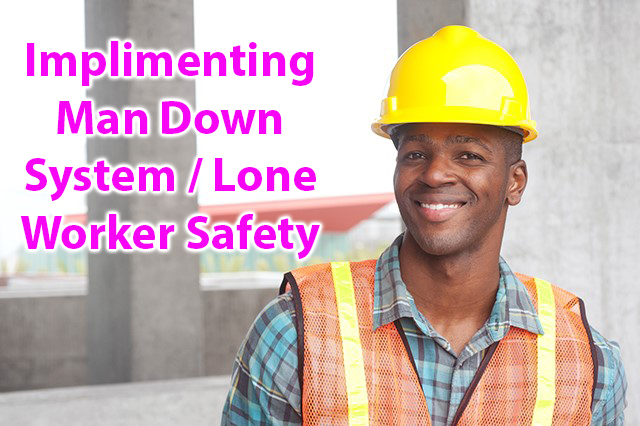 A lone worker is someone who performs an activity that is carried out in isolation from other workers without close or direct supervision. Such staff may be exposed to risk because there is no-one to assist them. The seriousness of the issue can be understood by these facts. According to International data corporation (IDC) 1.3 billion people work in a remote area around the globe and 53 million are lone workers in the USA, Canada, and Europe only. This raises the concern of safety for these workers, the common issues are slip or fall, trips, vehicle collision, electrical fires, and chemical exposure. As per the report of the International labor organization, 6300 people die due to work-related incidents or diseases and 317 million occupational incident occurs annually.
A lone worker is someone who performs an activity that is carried out in isolation from other workers without close or direct supervision. Such staff may be exposed to risk because there is no-one to assist them. The seriousness of the issue can be understood by these facts. According to International data corporation (IDC) 1.3 billion people work in a remote area around the globe and 53 million are lone workers in the USA, Canada, and Europe only. This raises the concern of safety for these workers, the common issues are slip or fall, trips, vehicle collision, electrical fires, and chemical exposure. As per the report of the International labor organization, 6300 people die due to work-related incidents or diseases and 317 million occupational incident occurs annually.
Looking at these facts if we see in organizations, they are mostly using manual methods rather than going for the modern solution. Firstly, in this article, we will talk about currently used methods, secondly the risk assessment tool that organization should use to understand the level of risk related to particular job than to ensure the safety of lone workers by adopting latest technology so in last we will suggest modern technology that helps organization to eliminate these issues.
Currently, how does the company Ensure lone worker safety:
- Personal Protective Equipment’s (PPEs): Organizations currently are providing personal protective equipment (PPEs) to lone workers which help them in the work. For example, if a lone worker is doing electricity related work, the organization will provide them safety glasses, face shields, hard hats, safety shoes, insulating gloves, and other safety tools.
- Regular visit and frequent communication: If a lone worker is working in a remote area, the organization visit them regularly to see how he is working. Similarly, daily communication is also done through radio and phones.
- Emergency alarms: Its placed in the premises of the organization, a lone worker can activate this when he is feeling any danger.
- Non-verbal Cues: Another most common way is to place signs on the dangerous areas. For example, when the floor is wet, there is a sign placed there. However, overuse of signs also leads to accidents where lone work doesn’t understand the meaning of the signs. That’s why the organization must give them proper knowledge about signs.
- Automatic warning system: It’s an automatic system that sends warnings when fire or explosion happens. It’s one of the common tools that almost every organization uses.
PET Analysis: It’s a risk assessment tool that helps to understand the risk related to the job of lone workers. PET Analysis has three components, People, Environment and task.
- People: the organization must see the history of violence, aggression or criminal activities of a lone worker. do they have any health issues? They must also see their experience of working alone.
- Environment: In that organization must look for what is the risk associated with the environment. Does phone work where lone workers are going, are they working on height and other issues related to the environment.
- Task: what is the risk related to the task of lone workers such as dealing with cash, enforcing a rule, working with chemicals or another complex task.
After doing this analysis company goes for a modern solution like one described below. iHelp is the full package solution that can help the organization to cope up with the issues that lone workers are facing.
Technology to Ensure Lone worker Safety:
If we see a lone worker do not want anyone to supervise them, they want to enjoy their freedom by working alone and at the same time, they demand safety and security. Looking at this situation technology is the only solution that is better than currently used manual methods as well. The one-point solution is provided by the ihelp-man down system which is the world’s smallest 3G GPS tracker device. It a small device so lone workers will not feel irritated while carrying the device. It also has the GPS tracker which sends continuously location to the organization. It has an amazing super accurate falling detection system when a person falls it automatically sends the message with location to the organization to take immediate measures which can save lone worker’s life. Apart from that is has a button on the device when a person feels any danger, he can press the button and it sends the location to the management. Its two-way communication enables you to talk with lone workers whenever you want to and have continuous information.
- 17
Oct 19
0
Way to Encourage Adoption of Man Down System (A10003)
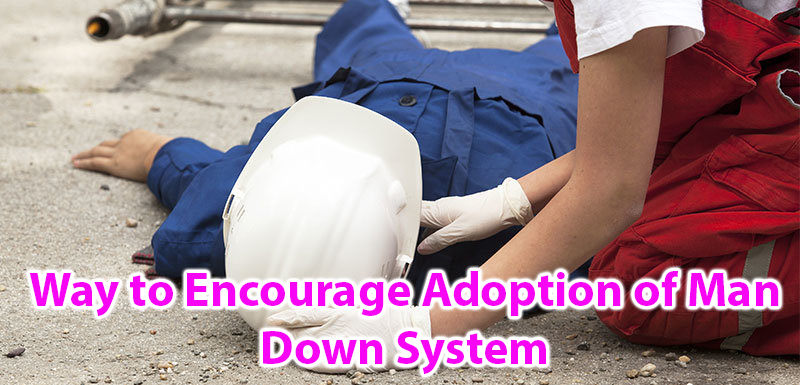 The lone workers like autonomy, they want to work alone, and they do not want someone to supervise them but at the same time, they also want safety and security measures to protect their lives. Employees are resistance to change, introducing solutions or system To Ensure their safety might not be so welcoming. Therefore, it’s a challenge for an organization to increase the usage of the lone worker’s solution. For that first, they have to remove any barriers related to lone worker’s solution and then they should take measures to increase the usage of the lone worker’s solution.
The lone workers like autonomy, they want to work alone, and they do not want someone to supervise them but at the same time, they also want safety and security measures to protect their lives. Employees are resistance to change, introducing solutions or system To Ensure their safety might not be so welcoming. Therefore, it’s a challenge for an organization to increase the usage of the lone worker’s solution. For that first, they have to remove any barriers related to lone worker’s solution and then they should take measures to increase the usage of the lone worker’s solution.
Common Barriers:
- it’s not necessary to carry devices: Many lone workers feel it’s not necessary to carry devices, it will only waste their time and attention. They also assume what happened to others will not happen with them. That’s why it’s important for managers to give them full knowledge and how it can reduce the potential risk associated with the lone workers.
- Lone Workers do not know how to use: Lone worker’s solution has many features and that’s why it is hard for lone workers to understand how it operates. Therefore, organizations must provide the proper guidelines about these lone workers’ solution devices.
- Fear of activating the alarm by mistake: Many lone workers fear that their small mistake can activate the alarm especially in the ‘’ man down system’ ’therefore they must be able to adjust the device setting and off the alert when its activities by mistake.
- Irritations in the work: Employees resist to use devices because they think it will irritate them while doing their jobs, that’s why the organization should use the latest technology like the ihelp-man down system which is the world’s smallest GPS tracking device described in the last section of the article. Apart from that organizations can tell the about cost-benefit relationship of having the devices, which means if they do not use the devices it may cost their lives.
- Mistrust of device: Lone worker’s solutions have a GPS system in the device that’s why many workers fear to be tracker other than the job. Therefore, it creates mistrust for the device.
- Fear of change: It’s human nature, we all resist change but however once the benefits are communicated through awareness, we are likely to follow the change. Similarly, organizations must properly communicate and try to reduce the fear in the usage of solutions related to lone workers.
Give them a part in decision making:
If you are looking for where to invest in the lone worker’s solution, then it’s a great opportunity to take the input of the lone workers. Involving them in the decision-making process will increase their commitment to use the devices. However, if you already have solutions related to the lone workers you can ask them what the potential barriers lone workers are facing, how can these solutions be improved, and other input related to the enhancement of the system.
Training: Lone worker’s safety solutions come with the bulk of features that’s why it’s important for an organization to help lone workers to understand how these things work. By doing this we can reduce many potential barriers that we explained above.
Carrot and stick Approach: by using this approach organizations should reward those who are using lone workers’ safety devices properly. On the other hand, it should impose penalties on those who are not using it as per instruction. Doing this organization creates incentives for those who are doing well and at the same time discourage those who are going against the organization’s policies.
Master your lone worker solution with ihelp-Man down system:
You can master your lone worker solution by using one device which provides you full solution related to the lone worker’s risks. Yes, its ihelp-man down system which is the world’s smallest 3G GPS tracking device. It’s easy to carry so lone workers will not feel irritate while carrying it during the job and at the same time it has a user-friendly operation that is easy to understand by lone workers. It has one button on the device, a lone worker can press in while he is any danger which will send alert to the organization with the location. Its amazing super accurate fall sensors will send message to the organization when lone work fall from somewhere so it can save the life of lone worker through timely first aid. Apart from that, it has a two-way voice communication system which will play a key role for the organization to be in touch with lone workers.
In conclusion, to increase the usage of lone workers solution organizations must break the barriers first and then take input of lone workers, train them, use carrot and stick approach to ensure the use of safety devices. Organizations should use devices like ihelp to master the lone worker’s solutions by using one device which includes all solutions.
- 17
Oct 19
0
How to Successfully Implement Man Down System (A10004)
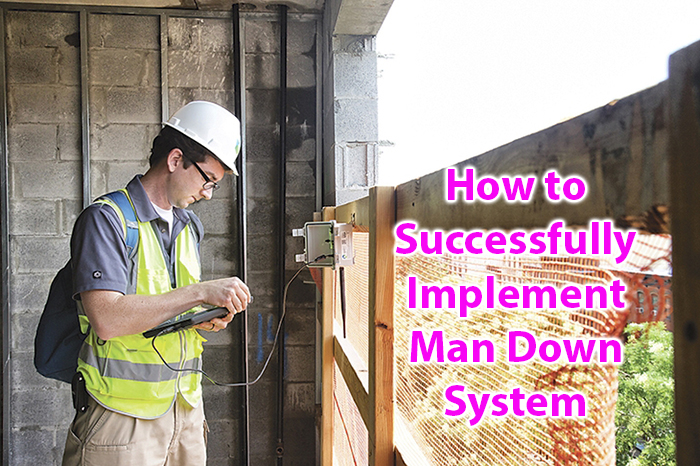 Today safety of lone workers is a rising issue and for that organization have tradition methods (manual) as well as modern methods(automatic). If we talk about the traditional methods, they are the time-consuming, labor-intensive and inefficient strategy. For example, a worker has to recheck everything manually before working on the job. Traditional methods include an alarm system, using a radio communicational system, giving the protection tool and other similar measures they were focusing on a single job. On the other hand, the cost of these measures is high. However, if we see the other side of the coin, modern solutions to lone workers are becoming pretty much common and organizations are adopting it more day by day. According to statistics, the lone worker solutions market is going to hit 260 million in Europe and north camera alone by 2022. These modern solutions provide many features like GPS tracking, provide communication channels, man down system and other important features that reduce the risk associated with loan workers. The advantages of these solutions are easy to use, cost-effective compare to old methods and provide a one-point solution.
Today safety of lone workers is a rising issue and for that organization have tradition methods (manual) as well as modern methods(automatic). If we talk about the traditional methods, they are the time-consuming, labor-intensive and inefficient strategy. For example, a worker has to recheck everything manually before working on the job. Traditional methods include an alarm system, using a radio communicational system, giving the protection tool and other similar measures they were focusing on a single job. On the other hand, the cost of these measures is high. However, if we see the other side of the coin, modern solutions to lone workers are becoming pretty much common and organizations are adopting it more day by day. According to statistics, the lone worker solutions market is going to hit 260 million in Europe and north camera alone by 2022. These modern solutions provide many features like GPS tracking, provide communication channels, man down system and other important features that reduce the risk associated with loan workers. The advantages of these solutions are easy to use, cost-effective compare to old methods and provide a one-point solution.
But now the question arises what should be the critical success factor you should look for while choosing the lone worker solutions. In this article we are going to show you what are the important success factor you should look for while choosing lone workers solutions:
Pre-Purchase Critical Success Factors:
- Automatic Alert System: If we see in old methods alert doesn’t provide full information which not reflect the seriousness of the situation, therefore we should choose a lone worker solution that not only sends the alert through message but also send location in a message and make a call to relevant supervisor. It should also include the man down the system if your workers are working in high places.
- Wearable and accessible: The major part that plays in the success of a lone worker solution is when an employee does not feel irritated while doing its work. So, if the device is comfortable to wear so there are more chances that a lone worker will use it. Accessibility is also an important feature. When an employee is in a dangerous situation, they have very little time to react therefore it should be accessible in the fraction of a second.
- Customization: Each industry has its own potential risk associated with the lone workers. Therefore, look for those solutions which you can modify according to your business. Like you need a solution that can send an alert alarm to a particular person, or you can set a particular location if a person leaves from there a message will be delivered to you. So, look for a solution that can be customized as per your need and can provide optimum security to your lone workers.
- Management control: Organization should look for a solution which provides them full control over the features of the solution. For example, lone worker solution devices should have the smartphone app which provides like the location of the lone worker, similarly, an organization can see where their lone workers were working in the past. By providing full control they can ensure the safety of lone workers.
- Integrated System: Try to buy those solutions which can be integrated with your current system or which will help you to integrate with solutions you are going to buy in the future. By combining all the devices, you can create a full-proof system that will surely help your organization to reduce the incidents related to lone workers.
Post Purchase Critical Success Factors:
- Develop policy: Develop a clear policy regarding the lone workers and communicate with the lone workers. It must include clear instructions about each job that the lone worker is doing and emphasize on the use of safety solutions.
- Training: lone workers’ safety solutions come up with so many features that’s why it’s important for an organization to train the employees on how they can use these features effectively. Similarly, during training organization should try to break any barrier which employee is having with the use of these solutions.
- Carrot and stick approach: the organization should provide incentives to those who are strictly following the safety policy and are using the lone worker’s solutions properly. On the other hand, there should be punishment for those who are going against the policy.
- Look back: the organization should look back from time to time and see the performance after the implementation of lone workers’ solution. If solutions have brought amazing results than try to maintain it. However, if the result is not encouraging you should start from the first point mention in the article and try to figure out what is the problem.
In conclusion, we suggest the mantra for the success of a lone worker’s solution depends upon two things. Firstly, in the pre-purchase step try to find solutions that are the best fit for your organization. Secondly, in post-purchase, you must develop effective policy, train the workers and use the carrot and stick approach to get fruitful results. So, these were the critical success factors to implement the lone worker’s solutions.
- 17
Oct 19
0
Man Down System by Industry (A10005)
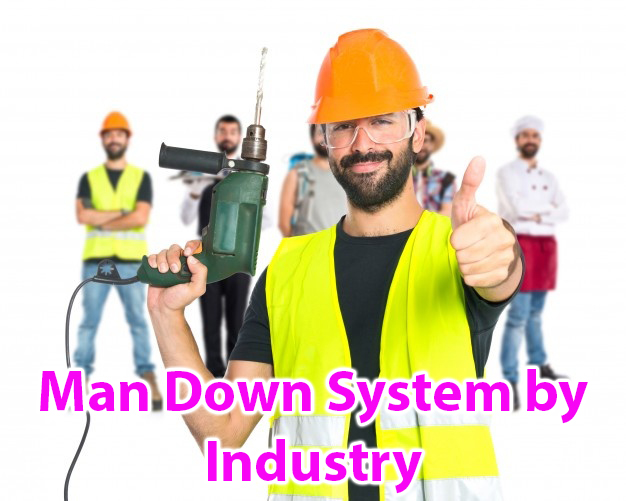 A lone worker is someone who works alone without any close or direct supervision. Therefore, without any direct assistant many times they face any injury which can take a life of lone worker if immediate help is not provided. The safety of the lone workers is very important in the sectors like Agriculture, Mining, Construction, Manufacturing, Electric, oil and gas, Sanitary Service, Finance and Insurance, and Real Estate Services. Each sector has its own risks associated with the lone workers. That’s why it’s really important to understand the different risk associated with each sector and what are the solutions that each sector use to cope up with these issues.
A lone worker is someone who works alone without any close or direct supervision. Therefore, without any direct assistant many times they face any injury which can take a life of lone worker if immediate help is not provided. The safety of the lone workers is very important in the sectors like Agriculture, Mining, Construction, Manufacturing, Electric, oil and gas, Sanitary Service, Finance and Insurance, and Real Estate Services. Each sector has its own risks associated with the lone workers. That’s why it’s really important to understand the different risk associated with each sector and what are the solutions that each sector use to cope up with these issues.
Every industry is responsible under the law to provide safety and security to the lone workers. Here in this article, we will talk about the most common risk that these industry lone workers face and what can management do to mitigate these potential risks.
Agriculture:
If we see in agriculture there are large farms and many employees, however, most of the time people work alone in remote areas. Due to involvement with heavy machinery, large animals and working with the hands increase the risk of injury. In UK agriculture fatal injury rate is 18 times higher than others. Therefore, it creates an alarming situation in the agriculture sector throughout the globe to take measures which will help to reduce the accidents related to lone workers employed in agriculture.
Management can reduce the risk by conducting regular training in which they can tell them how to use heavy machinery, Handel large animals and to use gloves while using working with hands. Similarly, for risk assessment, they can use PET analysis which includes what is risk associated with people, environment, and task through this they can assess the key risk of each activity done by the lone worker. Apart from that in this technological era management can introduce new vehicles and equipment which can reduce the potential risk associated with the traditional methods and equipment. Lastly, management can define safe driving roots by lone workers which may help them in remote areas.
Mining:
The mining industry is one of the riskiest industries in the world. Where the death ratio of employees and staff is high. Chinese government statistics indicate that 5000 Chinese miners die in accidents annually. Mining incidents continue worldwide, including accidents causing dozens of fatalities at a time such as the 2007 Ulyanovsk mine disaster in Russia. The above brief statistics show that safety has long been a concern in the mining industry. The individual suffers a lot in sub-surface (underground mining) than surface mining. individual works face many hazards while working such as coal dust inhalation which causes them difficulty while breathing, lung diseases, scarring of lung tissues, which can cause ongoing respiratory issues. and causes many health problems, other hazards they face such as noise of machines, exposures which affect their hearing abilities, overexposure to excessive noise can result in tinnitus (ringing in the ears), sleep disturbance, concentration problems even sometimes permanent hearing loss and chemical gases, surface temperature, limited oxygen flow. Another major hazard is whole-body vibration (wbv) is a slow forming physical hazard that mostly occurs in mining workers that work with heavy machinery. The risk of overexposure of ultraviolet radiation in sunlight is essential. overexposure to UV can cause skin cancer.
The management should introduce a dust control plan and supervisor, or top management should ensure that the dust control system working properly or not. we should train them on how to manage overexposure of coal dust. What precautions taken at the time of overexposure of coal dust. Repository protection should be used when dust control protection is being installed, maintained or repaired. Medical screening and surveillance are also essential. To protect their workers against noise, the steps management must take that first they evaluate work condition noise exposure through risk assessment. They can use vibration dampeners and absorptive panels to control vibration occurs in the working environment. Regular maintenance and assessment of heavy machines are also important to reduce noise hazards. employees should use noise protection tools which help them to reduce noise hazards. For whole-body vibration hazard management should reduce the working schedule of employees, management should design flexible working schedules for employees, proper instruction and training are very critical for this job, regular health checkups and close monitoring of back pain can reduce this dangerous hazard.
Management should conduct a risk assessment on an outdoor work schedule to assist in developing appropriate sun protection measures.
The most effective way of reducing the UV exposure is to use a combination of protection method, we cannot rely on simple method, we should use a combination of protection method such as including re-organizing work to avoid the UV peak of the day, provide natural or artificial shade-providing appropriate protective clothing, and applying sunscreen.
Manufacturing Sector:
The manufacturing sector engages in the transformation of raw materials into goods. The manufacturing sector includes pharmaceuticals, food, vehicle, textile, and other related businesses. Like other sectors here in the manufacturing sector there are various fields where they need lone workers i.e. maintenance and repair. When an employee is out of sight there the risk associated with lone workers increases. Heavy machinery is the major cause related to injuries in the manufacturing sector, on the other hand, lone workers are unable to communicate to get help in a dangerous situation.
Management can identify all the lone workers in the manufacturing sector and then do risk assessment related to each lone worker job. After doing risk assessment they can develop a policy regarding the safety of lone workers. Apart from that employees can carry alarm with them when they are going for a task which is in remote areas. Similarly, they can be more careful while using the equipment. Organizations can also provide them Personal protection equipment which will surely reduce the risk related to lone workers.
Oil and gas industry
If we see globally oil and gas prices are lower than ever before therefore organization budgets are limited, however, we cannot compromise on the safety of lone workers. Majority oil and gas extraction sites are in remote areas where it’s hard to maintain the connection with the lone workers.so there is out of sight and out of touch problem in the oil and gas sector which gives birth to so many risks. The most common risk associated with the lone workers in the oil and gas industry is slips and falls, falling objects, cuts and burns and continuous exposure to gases. The risk can turn into a dangerous situation in which immediate response is needed.
The solution for the oil and gas industry is to use new modern tools like the ihelp-man down system which is the world’s smallest 3G GPS tracking system. A lone worker can press the button when he is feeling any danger or automatic message will be sent with location when he is falling due to any situation. Other measures can be to use protection tools like masks, hand gloves and other tools to make sure physical safety.
Electricity sector:
This sector has the most risk when it comes to lone workers, it’s because these people have direct exposure to the electricity and the typical job of lone workers in this field is more than one hour so in this duration any mishap can happen which can lead towards worst consequences. There is also a risk of death if something happened and immediate measures are not taken. Other hazards they can face that sometimes they get electric shocks while working on the towers, in high places due to this they can fall on the ground and get serious injuries.
Therefore, the organization has those lone workers who are highly trained. Whereas they should have the contingency plan what lone worker should do if he comes across a dangerous situation. They should also work in the pair. They can use proper safety belts while performing the job on high sites or they can use the man-down system which will helps management to get fast alert when a lone worker falls down on the surface from top sites.
Construction:
The construction industry is among the industries which are growing fast due to an increase in population and urbanization in the whole world. construction industry includes the construction of buildings, roads, houses, hospitals, workplaces, shopping malls, etc. But hazards lone worker faces when he is working on the height, the noise coming from tools, the heavy machine is higher than other construction works. The critical and major hazards lone worker face on sites are, falls and slips, being caught between objects, falling from top of the object, unstable working surface, slips or falls from ladder of stairways, electric shock, head injury, falling from heavy machines such cranes, while loading and unloading heavy machine from one object to another, improper training & supervision. sometimes lone workers are working in remote areas so due to not effective communication they unable to interact with their team.
For reducing these hazards management should integrate safety as a part of planning, firstly they should provide proper coaching and training to foreman and supervisors then they will guide their lone workers who work individually on remote areas without any assistance from the top tier of management. They must introduce a fall protection system & head protection to reduced serious deaths and injuries during the job. For lone worker management must provide them safety training and show them the demo of how-to proper use tools and machines. Foreman or supervisor should do site assessment before starting work. Proper safety inspection and inspect tools & equipment regularly.
Lone workers who are working in remote areas should provide proper display signs, so they don’t feel any hurdles while working. For effective communication, management can use a wireless phone or any electronic device. They can also use robots for different jobs to reduce lone work injuries and deaths ratio.
Finance and Insurance Sector:
Unlike other sectors in the finance and insurance sector, the lone worker ratio is high than in other industries. In the banking and insurance sector mostly, lone workers are sales representatives & business development officers. Those who are working outside of the bank try to reach customers for different purposes. Like the person who goes for the collection of loan or insurance amount, because they carry so much money there are chances few evil minds people can harm lone workers which may cost financial losses and also is a potential threat to lone workers. Lone workers in the finance and insurance sector can suffer from heatstroke, dehydration problems in hot weather.
So, the management can go for GPS tracking devices which will help management to trace the lone workers. For making their lone worker life easy company can provide them vehicles designed in such a way that protects them from the sun in hot weather. Re-organizing work to avoid health-related hazards, provide natural and artificial shades and applying sunscreen.
Real estate industry:
The nature of the real estate industry is in which agents work alone; in which agents go with buyers or sellers of properties, you don’t know what you find behind the door and there are chances they can harm him physically. Apart from that the agents most of the time carry huge money which can create a problem when someone gets a clue about the amount. In the real estate industry, the lone worker mostly hasn’t proper information about market location, rates, demand and value of bungalows, flats and commercial areas. Lone worker job in the real estate industry is mostly to visit fields so a lone worker can suffer from many health hazards in hot weather.
Therefore, like other sectors measures like GPS tracking, drive though safe roots, always carry protection tool with you. Apart from that do not share your personal information with the clients and try to meet with your clients in public. Management must provide proper information about market, value, and rates of different sites so lone worker never hesitates while presenting to the clients and deliver a presentation with real facts and figures. For lone worker management should provide safety measures such as applying sunscreen, protect lone workers through natural or artificial shades or making some changes in schedule so the lone workers can protect themselves from hot weather.
Sanitary services:
A service in which workers job is to empty people’s dustbin and take the rubbish away for recycling or disposed of. The sanitary worker’s duty to check the draining system & remove all the blockages, cross bores or damages. lone worker can face hazards such as exposure of harmful gases; methane, Hydrogen sulfide. Lone workers affected by many infections while working such as hepatitis, skin problems. Cuts, scratches, penetrating wounds are the regular hazards that they are facing horribly. The lone worker hazards increase when they do work underground in different pipelines, they are facing problems such as breathing, hydrogen, lack of light, limited resources. The main hazards are that they get injured from different insects during the work. They don’t wash hand properly after performing their duty due to lack of awareness and knowledge
The management should take medical measures on regular bases to detect any health disorder or problem in lone workers. Lone workers must provide proper dress, gloves, and shoes so they can save themselves from cuts, scratches and penetrating wounds. Provide them proper masks and torches to perform their work properly. Proper awareness and education must be given to lone workers. Teach them how to clean hands after doing jobs so they can keep safe themselves from different health diseases.
In this article we briefly talk about the major sectors that are affected by the lone worker’s issues, therefore, we have suggested the solution of each sector. By implementing the above solutions and integrate these solutions as a part of planning, management can reduce these hazards and increase the performance and output of their lone workers. The success of an organization is totally depending upon the performance of employees especially lone workers; if the organization facilitated their lone workers then they can achieve their targets and desired goals.
- 16
Oct 19
0
More Companies are Using Technology to Monitor Employees
 Employee surveillance is the use of various techniques at offices, and other workplaces to collect information about the activities and locations of employees. More companies are adopting the latest technology to monitor employees to improve productivity and safeguard corporate resources. The main intention is to prevent unacceptable behavior in the workplace.
Employee surveillance is the use of various techniques at offices, and other workplaces to collect information about the activities and locations of employees. More companies are adopting the latest technology to monitor employees to improve productivity and safeguard corporate resources. The main intention is to prevent unacceptable behavior in the workplace.


